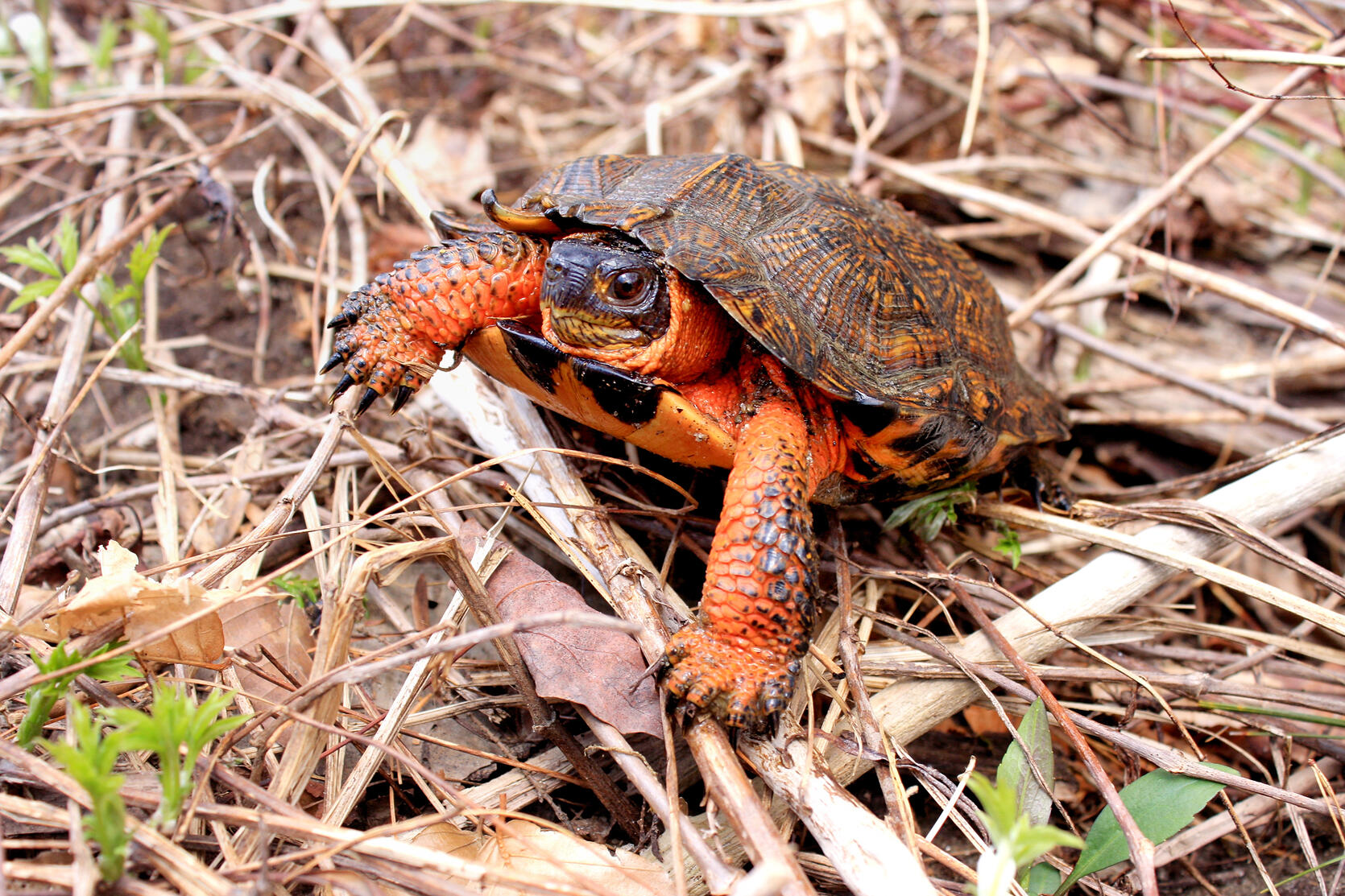- MassWildlife's Natural Heritage & Endangered Species Program
- Division of Fisheries and Wildlife
Media Contact
Media Contact, MassWildlife

This spring, MassWildlife and Zoo New England begin a new three-year project focusing on the conservation of wood turtles. Once common in most of the cool, free-flowing streams of the Merrimack River Valley, wood turtle populations have declined so much that they are protected under the Massachusetts Endangered Species Act. Populations closest to Boston have experienced major decreases as residential developments have increased.
You may say that things don’t look good for wood turtles, but there is hope. A few, small populations still persist. They are small and isolated, and in need of focused and sustained management efforts to thrive. Working with Zoo New England provides a timely opportunity to understand and implement the most pressing management needs for wood turtles in eastern Massachusetts.
MassWildlife and Zoo New England have partnered on other important conservation efforts. Probably the most well-known is the northern red-bellied cooter headstart program. For over 20 years, more than 4,000 of these state and federally endangered turtles have been released. Headstarting is a process in which hatchling turtles are captures and raised over 8–9 months, resulting in yearlings that are the size of 3-year-olds at the time of release. This increase in size gives each turtle an advantage in surviving to adulthood.
Steps involved in this wood turtle project includes searching stream habitats to find wood turtles, tracking movement patterns and habitat use with radio telemetry, and identifying unoccupied areas where wood turtles might successfully establish populations in northeastern Massachusetts. Hatchling wood turtles will be headstarted, outfitted with tracking devices, and released in areas where they hatched or in a nearby, suitable reintroduction site.
The wood turtle is so-named because its carapace, or top shell, looks like carved wood. These medium-sized turtles grow to about 6–8 inches in length and are found in small populations throughout stream habitats in Massachusetts. Though few hatchlings survive to adulthood, once wood turtles reach maturity they can to live to more than 70 years. As adults, wood turtles have few predators but are vulnerable to road casualties, forestry and agricultural activities, streambank development, and pesticide and heavy metal pollution in waterways.

